Idea by
LHRC Light Architecture Collective
LHRC Light Architecture Collective
https://www.lhrcarquitectura.com
Call for ideas 2018
MORPHO-GENESIS
MORPHO-GENESIS
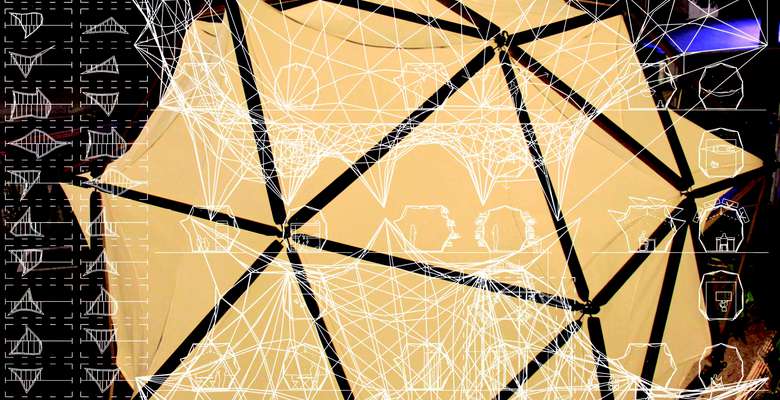
Nature has worked for years designing complex structural systems. What we see today is the result of countless advances and innovations trialed and tested on the field. And it seems we can identify certain laws, patterns and principles repeated across scales, from the atom to the universe. The search for efficiency and energy-saving strategies has favored integral tension systems over compression systems.
We try to internalize and learn nature’s behaves designing and producing structural artifacts in which efficiency is the norm. Learning, integrating instead of teaching, forcing.
This has led us further into the light architecture field: deployable, detachable, tensioned. Our idea is to create new prototypes in this field using low cost and recycled materials making the most of their efficiency and considering their ecological footprint. These prototypes will be explained through a catalog of assembly and set up easily readable by everybody. “Assemble It Yourself” instruction book.
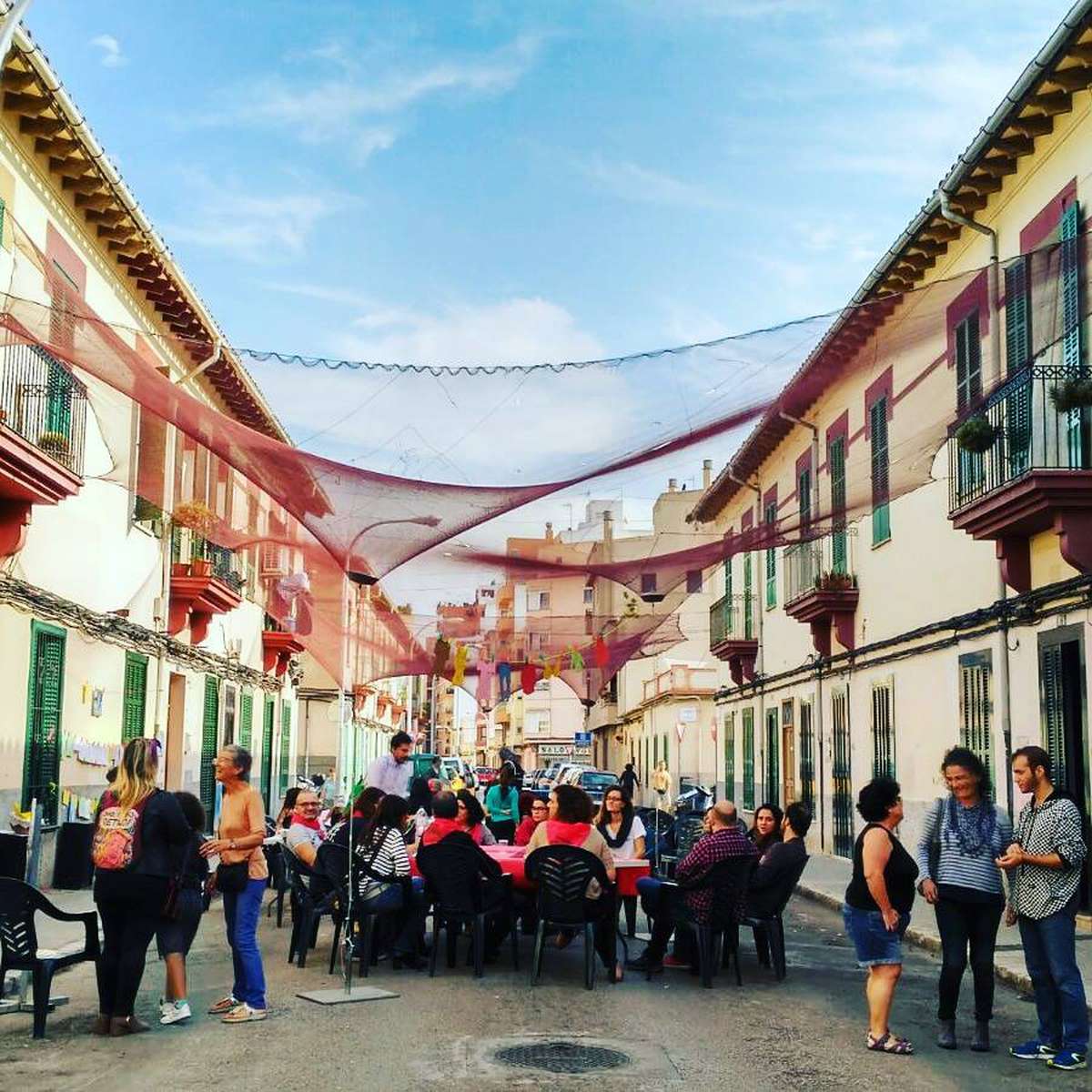
There is another way of designing architecture, more appropiate with the social, political and urban scenary in which we are immersed today. The intention was to give a neighborhood of Mallorca a space for the meeting, in a one-day occupied street. The architecture is reduced the minimum, leaving in the hands of the neighbors the filling of meaning the space. This installation was made with reused fishing net. The final shape was determined by the material, not imposed form before.

This design was made in ETSAV (Barcelona) as a part of the workshops week organized by the faculty. The result was the construction of an outdoor pavilion for multiple uses, in which different techniques and knowledge were combined. The main ribs of the structure are made with cane, and the coverings are made of textile material coming from recycled boat sails. The tension of the fabric combined with the inclination of the arches endows the structure with great stability and spatial quality.

This covering-flexible structure was made for Reina Loba Festival 2017, Galicia. The aim was to cover as much space as posible with very few materials and just two posts. Two compressed bars are located at the ends of a recicled parachute, that offers the shadow. in this occasion the fabric is not assuming any traction effort. The whole structure is supported thanks to the network of tensioned cables. Leaving the parachute almost free offers a nice view of evanescent waving shapes.

This project was built with the students of the UAH Faculty of Architecture, as an application of tensegrity principles. The function of the prototype is to accommodate four hammocks to service the inner courtyard of the faculty. Thanks to tensegrity principle, removable structure formed by materials of minimum section, is obtained. The whole structure is made of stainless steel, and the mast suspended in the center guarantees greater tension in the upper points.
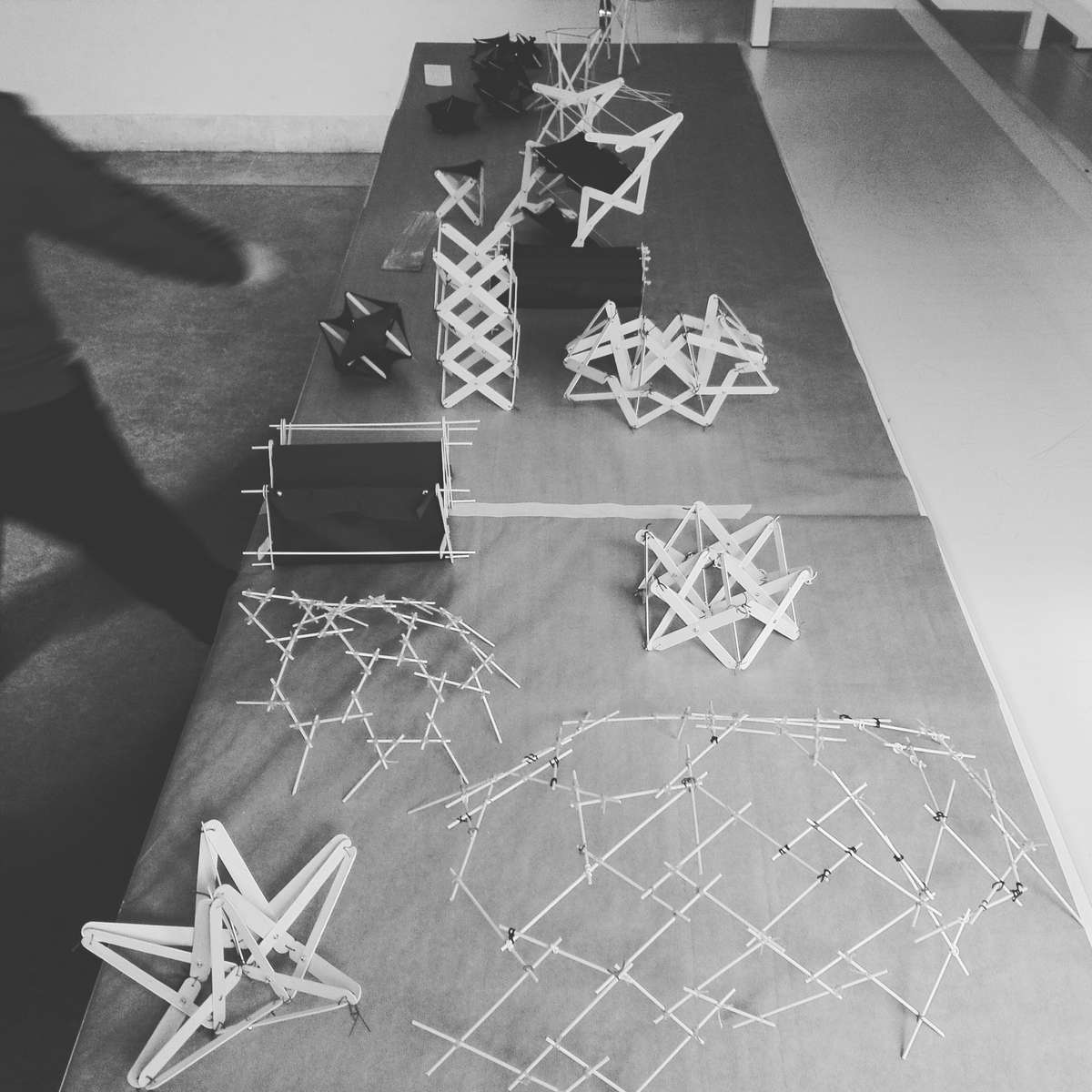
As a way of deepen in our knowledge on light structures and material morpho-genesis procedures, we offer courses on different topics, prototype-making oriented. In this courses we teach on some structural concepts, and they are normally oriented to a special located purposes. Courses have been given in Mexico, at Tecnológico de Monterrey, and Spain, at Universitat Politécnica de Catalunya and Universidad de Alcalá.
MORPHO-GENESIS
MORPHO-GENESIS

Nature has worked for years designing complex structural systems. What we see today is the result of countless advances and innovations trialed and tested on the field. And it seems we can identify certain laws, patterns and principles repeated across scales, from the atom to the universe. The search for efficiency and energy-saving strategies has favored integral tension systems over compression systems.
We try to internalize and learn nature’s behaves designing and producing structural artifacts in which efficiency is the norm. Learning, integrating instead of teaching, forcing.
This has led us further into the light architecture field: deployable, detachable, tensioned. Our idea is to create new prototypes in this field using low cost and recycled materials making the most of their efficiency and considering their ecological footprint. These prototypes will be explained through a catalog of assembly and set up easily readable by everybody. “Assemble It Yourself” instruction book.
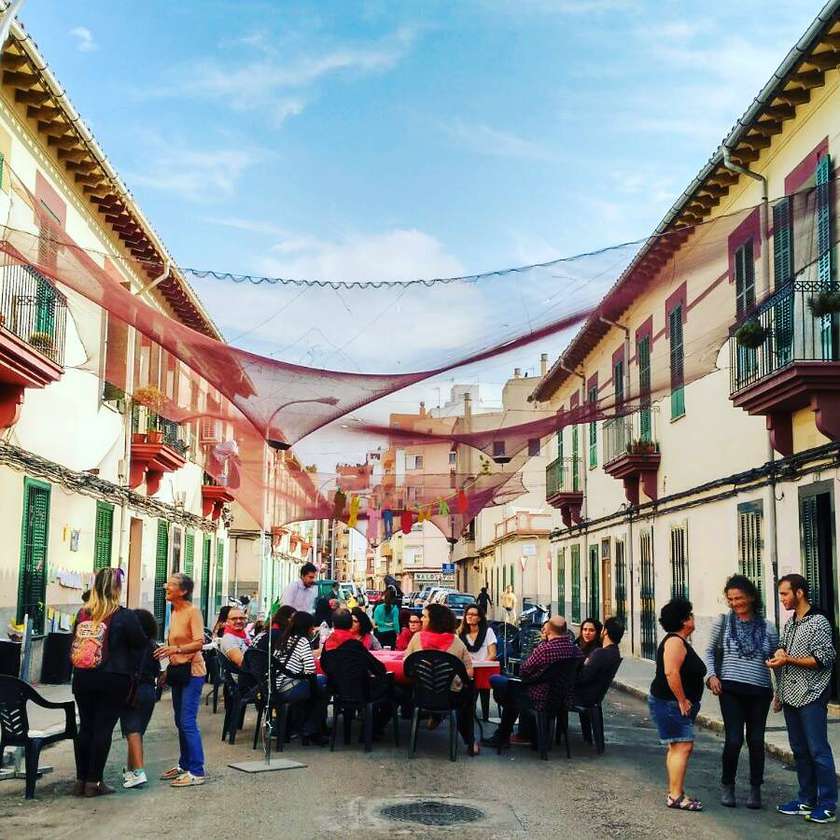
There is another way of designing architecture, more appropiate with the social, political and urban scenary in which we are immersed today. The intention was to give a neighborhood of Mallorca a space for the meeting, in a one-day occupied street. The architecture is reduced the minimum, leaving in the hands of the neighbors the filling of meaning the space. This installation was made with reused fishing net. The final shape was determined by the material, not imposed form before.
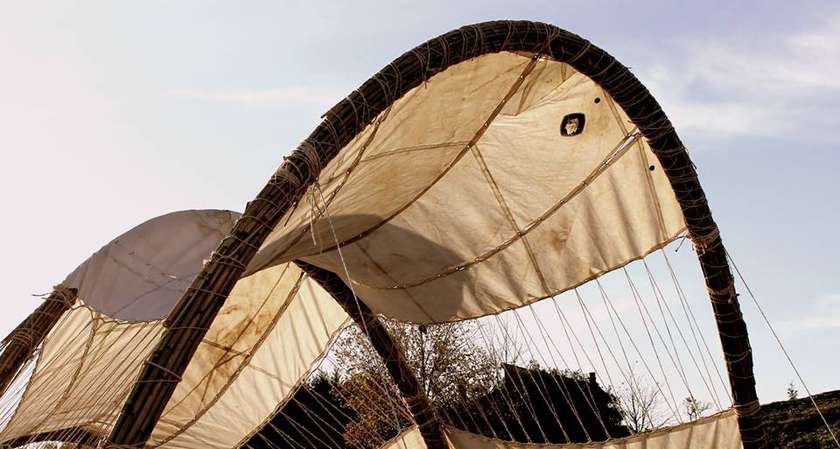
This design was made in ETSAV (Barcelona) as a part of the workshops week organized by the faculty. The result was the construction of an outdoor pavilion for multiple uses, in which different techniques and knowledge were combined. The main ribs of the structure are made with cane, and the coverings are made of textile material coming from recycled boat sails. The tension of the fabric combined with the inclination of the arches endows the structure with great stability and spatial quality.

This covering-flexible structure was made for Reina Loba Festival 2017, Galicia. The aim was to cover as much space as posible with very few materials and just two posts. Two compressed bars are located at the ends of a recicled parachute, that offers the shadow. in this occasion the fabric is not assuming any traction effort. The whole structure is supported thanks to the network of tensioned cables. Leaving the parachute almost free offers a nice view of evanescent waving shapes.
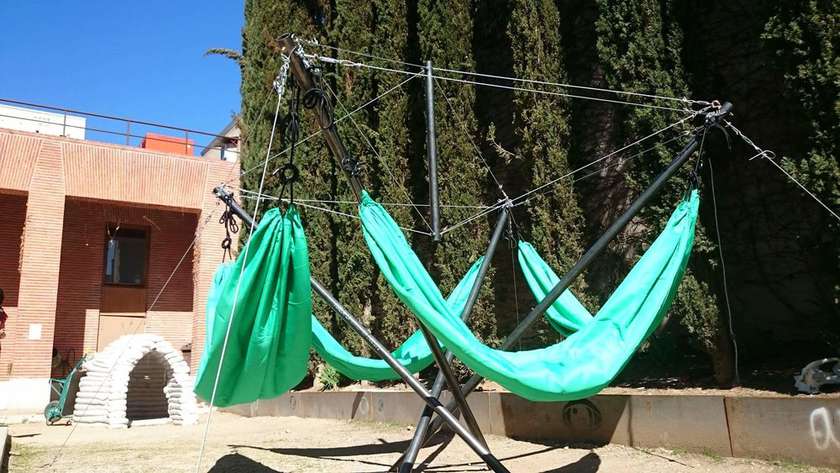
This project was built with the students of the UAH Faculty of Architecture, as an application of tensegrity principles. The function of the prototype is to accommodate four hammocks to service the inner courtyard of the faculty. Thanks to tensegrity principle, removable structure formed by materials of minimum section, is obtained. The whole structure is made of stainless steel, and the mast suspended in the center guarantees greater tension in the upper points.
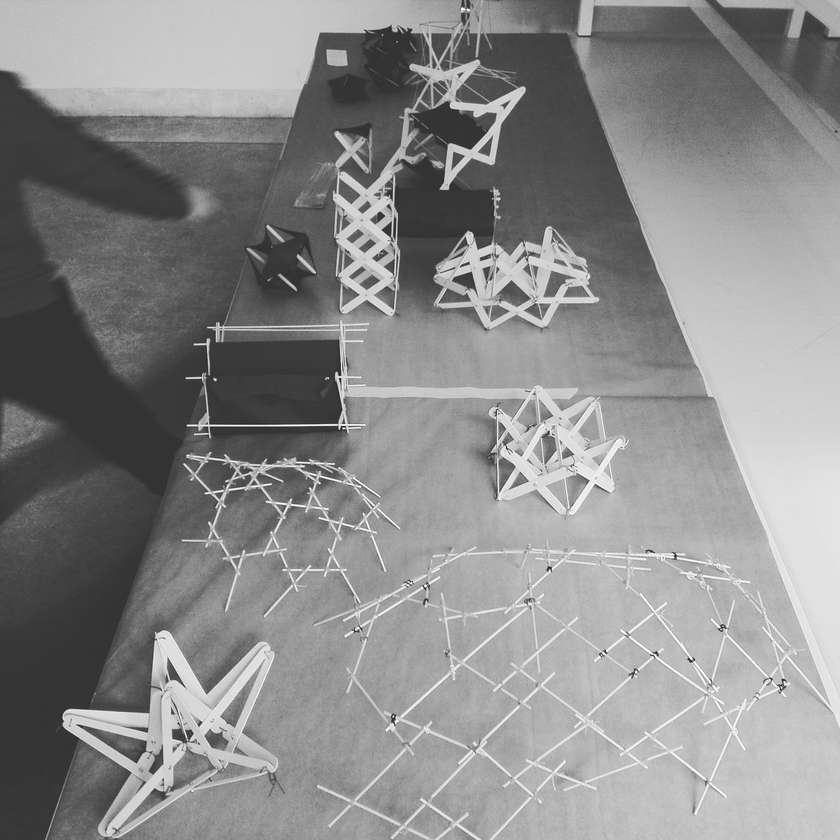
As a way of deepen in our knowledge on light structures and material morpho-genesis procedures, we offer courses on different topics, prototype-making oriented. In this courses we teach on some structural concepts, and they are normally oriented to a special located purposes. Courses have been given in Mexico, at Tecnológico de Monterrey, and Spain, at Universitat Politécnica de Catalunya and Universidad de Alcalá.